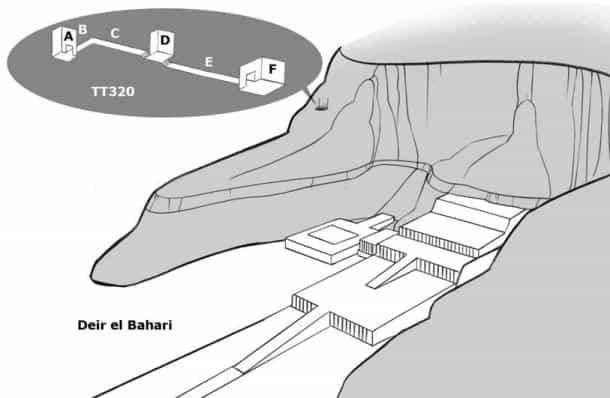Lady Rai, a prominent figure from ancient Egypt, emerges as a captivating subject when delving into the realm of mummification practices.
Unearthed in 1881 within the confines of the Royal Cachette (TT320) near Deir el-Bahari, Lady Rai stands as a testament to the artistry and precision of embalming techniques of her time.
Believed to have lived around 1530 BC, Lady Rai’s exact age at the time of her passing is estimated to be between 30 to 40 years old. While her origins remain somewhat obscure, historical records suggest she served as a nursemaid to Queen Ahmose-Nefertari during the early 18th Dynasty of ancient Egypt.
Despite the scarcity of details regarding her lineage, Lady Rai’s burial in the elite necropolises of Deir el-Bahri and Thebes suggests her affiliation with a prominent family of her era.
Unfortunately, the whereabouts of her original tomb remain elusive, likely plundered in antiquity, leading to her relocation to the Royal Cachette.
Lady Rai’s journey to the afterlife took an unexpected turn as her original coffin was lost to time, leaving only remnants of her outer casing.
However, her identity was preserved through meticulous labeling, a common practice among priests during the Third Intermediate Period.
Interestingly, Lady Rai’s embalming process exemplifies the sophistication of ancient Egyptian mortuary rituals. Wrapped in linen and coated with a resin-sand mixture, her body bore the marks of a meticulous embalming incision, covered by a protective plate. Jewelry adorned her right wrist, symbolizing a sacred adornment integral to the mummification ritual.
In 2009, modern technology shed new light on Lady Rai’s legacy as a CAT scan revealed evidence of atherosclerosis, making her one of the oldest known individuals afflicted by this condition. This discovery underscores the enduring relevance of ancient mummies in unraveling medical mysteries of the past.
Despite the passage of centuries, Lady Rai’s legacy endures, immortalized as “the most perfect example of embalming” by Grafton Elliot Smith in 1909.
Today, her mummified remains reside in the Egyptian Museum, Cairo.

#Mummy #Lady #Rai


